



It’s early morning on a crisp summer day on the coast of Kochi in Kerala, and the sound of the waves are undercut by motor boats coming to life. The fisher folk are readying their vessels – 80 per cent of fishers use motorised boats now. But there’s a problem – the fuel, maintenance and repair costs are cutting into the income of the community. And then there’s the larger problem of carbon emissions from fossil fuels. Despite having the highest net operating income among the coastal states, Kerala also has the highest share of operating costs and the highest numbers of fishing families below the poverty line.
A recent Council on Energy, Environment and Water (CEEW) study found that switching to solar-powered e-boats can solve several of these issues. It’s cheaper, sustainable, better for the environment, and raises incomes. There’s a whopping 84 per cent increase in the earnings of fisher folk when they use solar-assisted e-boats, the study found.
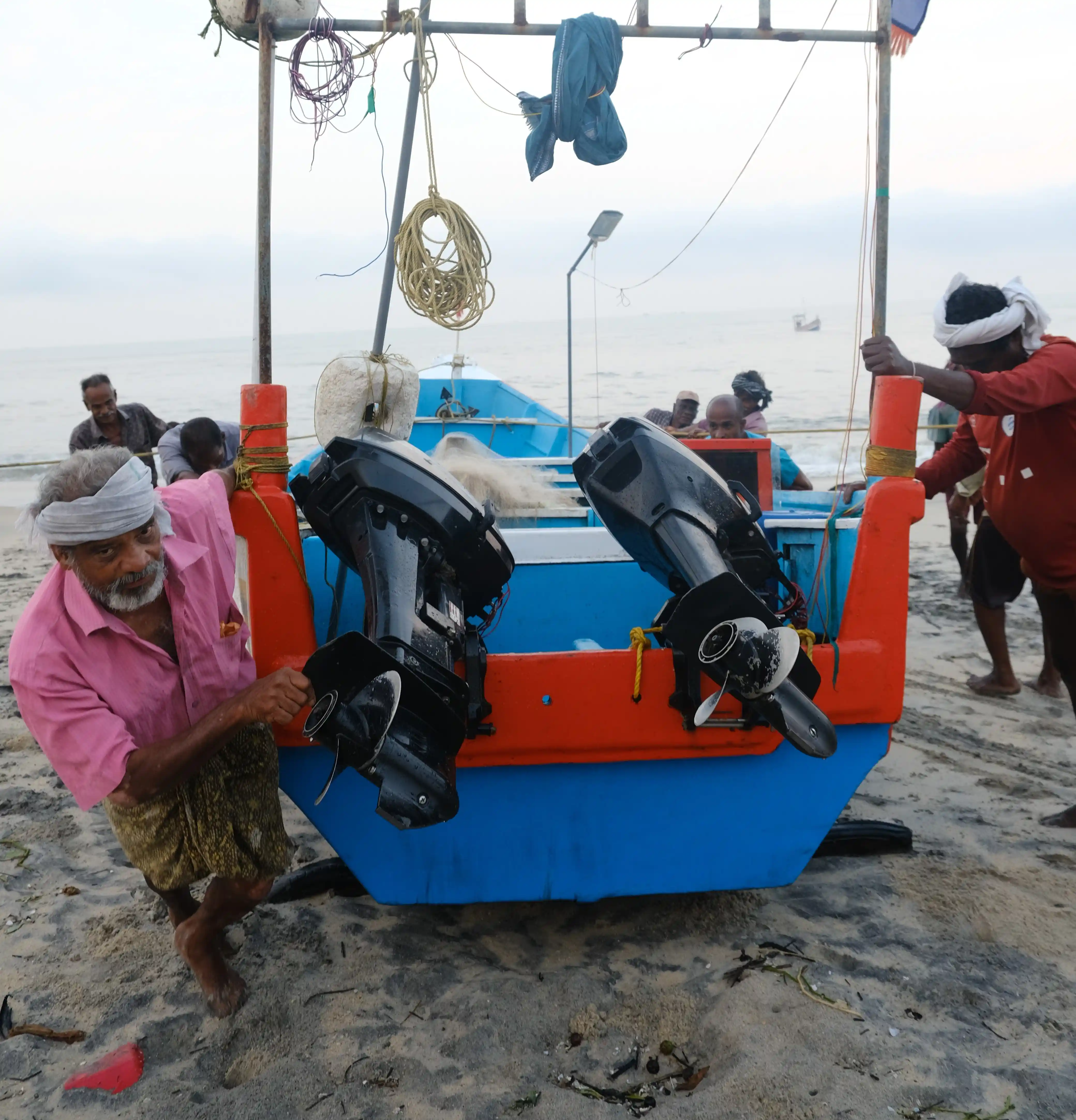
Fishermen docking their motor powered fishing-boat to retrieve the morning catch.
Image: Kartikeya Jain/CEEW
Kerala has the fifth-longest coastline among the nine coastal regions in India, contributing to almost 13 per cent of the national marine fish production and supporting the livelihoods of 8 lakh people. The most commonly used fishing vessels in Kerala are mechanised and motorised boats. Given the prominence of this sector in terms of livelihoods, a switch to solar-assisted electric boats can have multifaceted benefits. However, there are certain challenges hindering the adoption of this technology.
We conducted focus group discussions (FGDs) in two villages in Kochi – Chellanam and Puthuvypin – to understand the current issues the fishing community face and challenges related to the operation of their vessels.
Despite the availability of formal loans, boats are not considered collateral by banks, which private lenders have historically exploited. At the same time, middlemen fix the price of the catch and take most of the profit. Added to this, the ever-increasing fuel prices diminish whatever earnings the fisherfolk make.
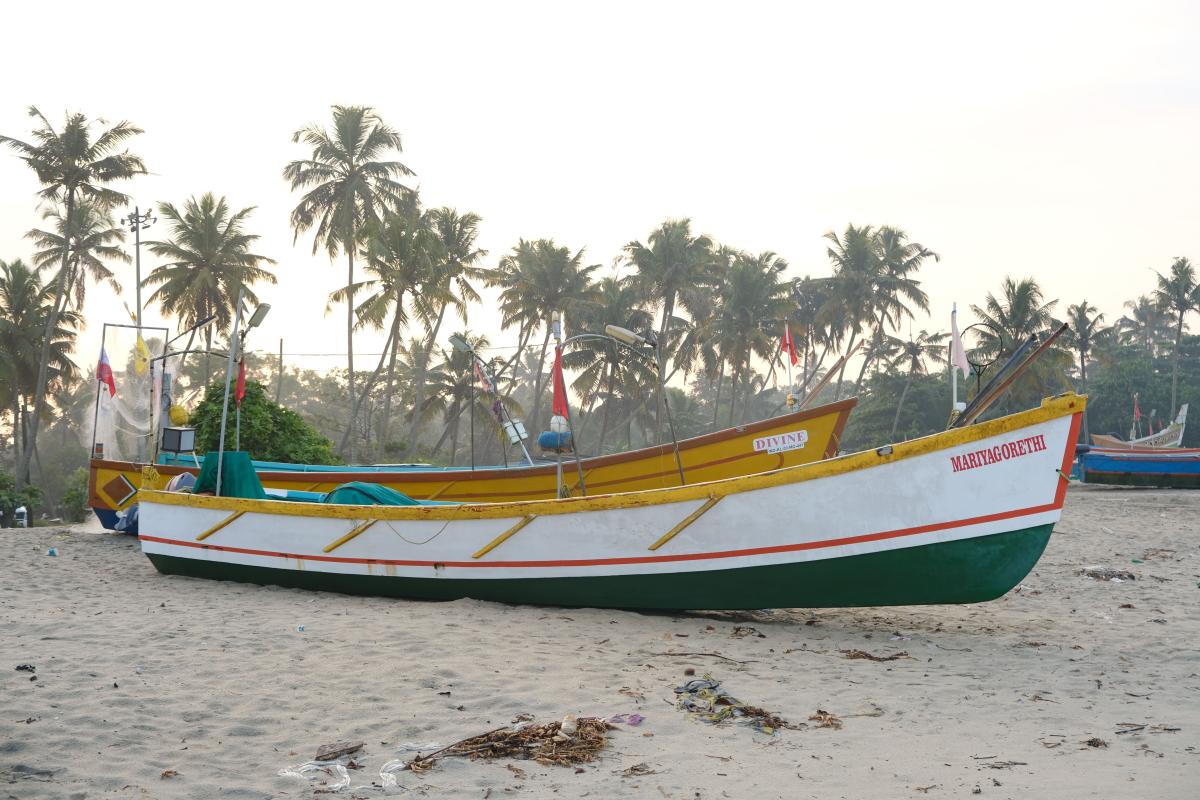
Image: Kartikeya Jain/CEEW
Motorised fishing boats currently in use for fishing purposes don’t cater to the ground realities of the activity. Fisherfolk must be consulted by manufacturing companies to understand the genuine demand and gap, and their experience of using these boats. The problem with the top-down approach is that it doesn’t acknowledge indigenous knowledge systems such as those for weather, tides, and prevents technology adoption.
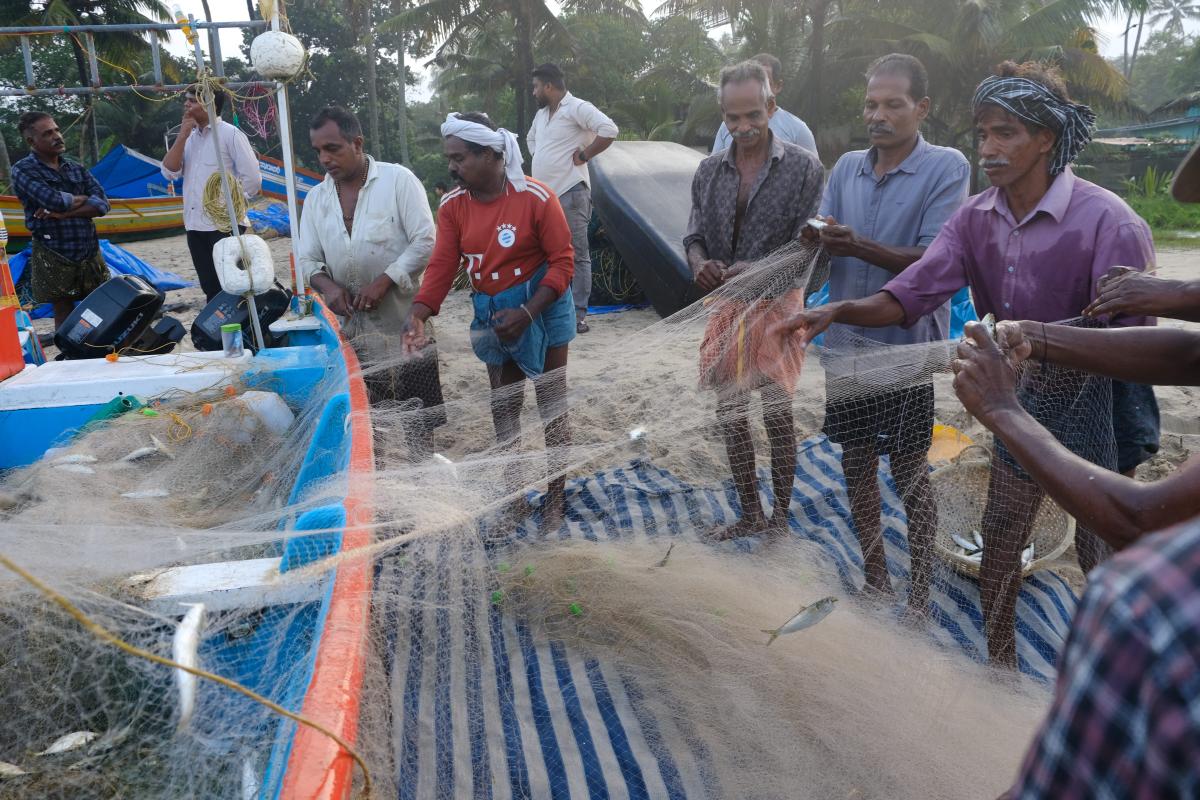
Image: Kartikeya Jain/CEEW
The main challenge traditional fishers face is the uncertainty of the catch due to depleting fish resources and increasing extreme weather events. The lack of technology and communication facilities has made rescue operations ineffective at the time of cyclones or accidents at sea. Erratic monsoon patterns, surface water warming, and wind pattern change has resulted in dwindling of the fish catch.
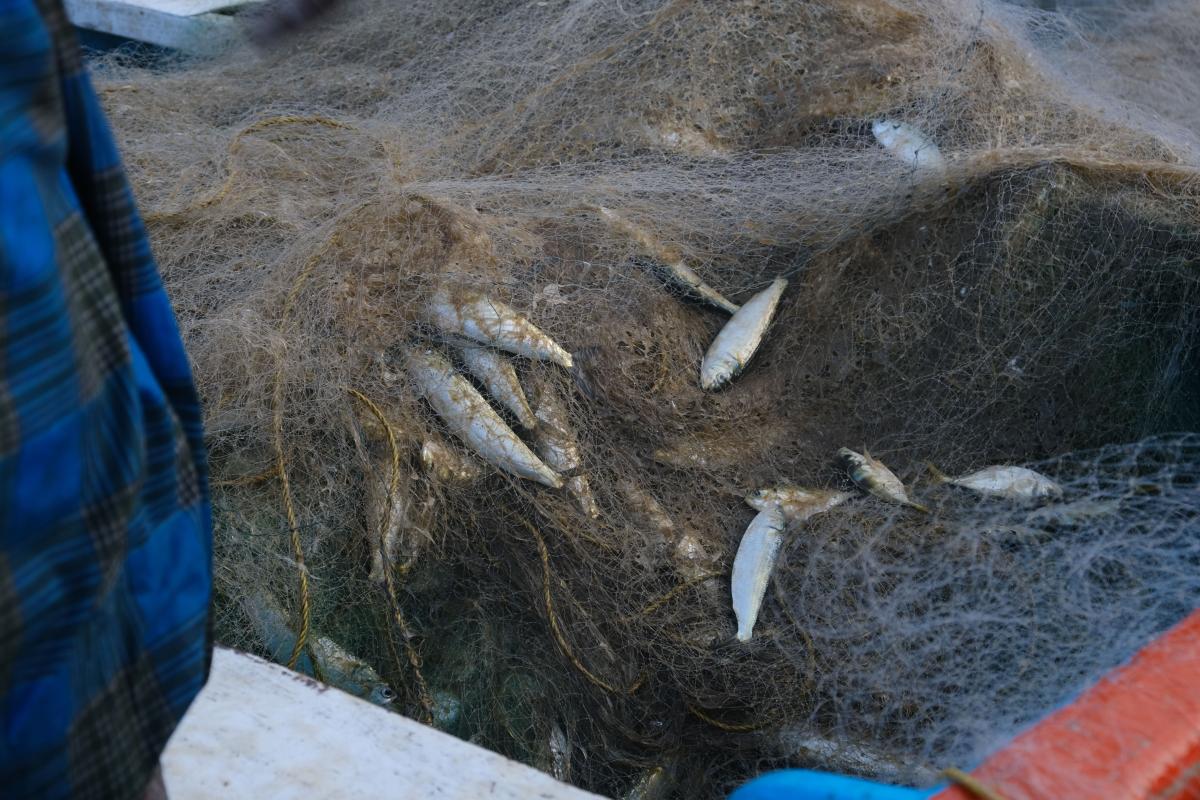
Image: Kartikeya Jain/CEEW
Due to the lack of financial support and access to modern technology, fishers have less control over the catch, post-harvest. With limited access to cold storage options and effective transport modes, the catch tends to lose value and affect incomes from it.
There is no one-fit solution for the challenges faced by the Kerala fisherfolk. But understanding the marine ecosystem, fish resources and fishing practices is the first step to addressing them. The average distance travelled by each community and their fishing practices need to be understood and recorded for better intervention on fuel saving and improving fishing practices.
Most of the challenges related to the livelihood of fisher folk can be addressed by making vessel operations efficient, leading to lower costs. Solar-assisted e-boats can potentially improve operational efficiency while reducing overall operational costs. The total cost of ownership for solar-assisted electric boats is about 60 per cent lower than that of petrol-operated boats, with the possibility of a reduction of 560,000 tonnes in CO2 emissions.
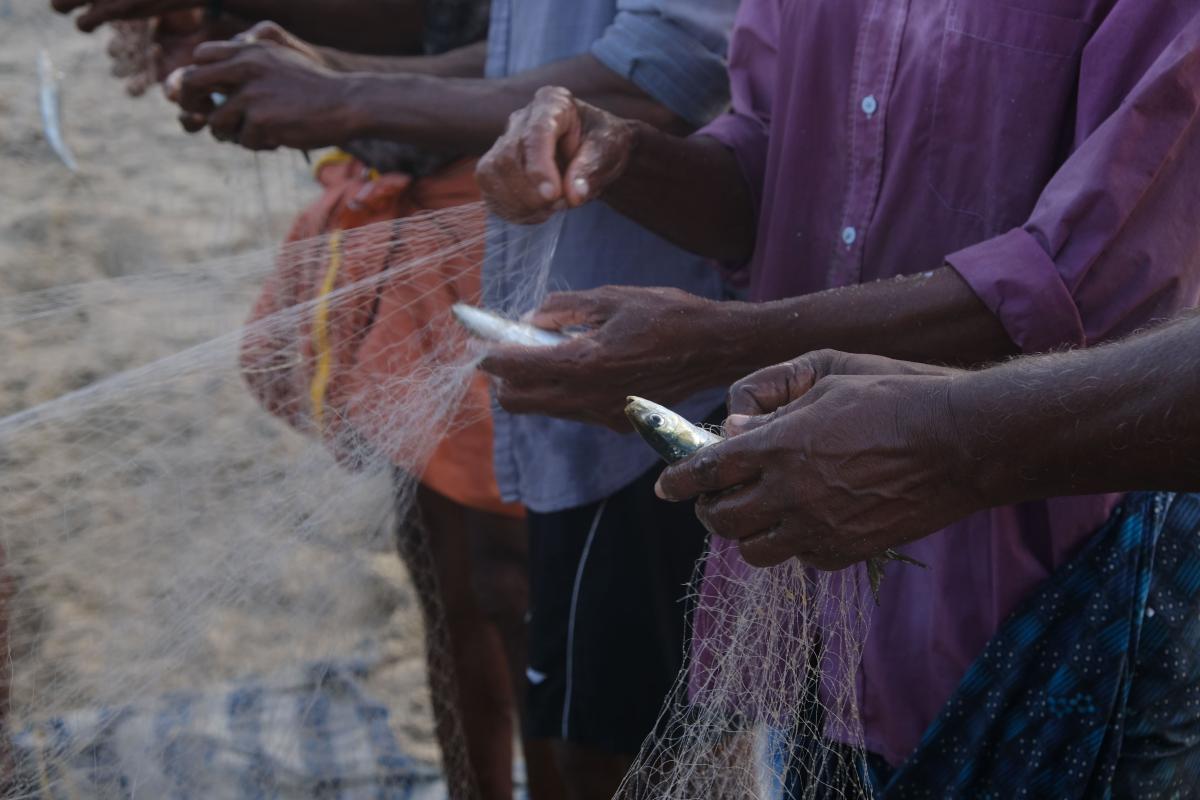
Image: Kartikeya Jain/CEEW
Electricity as a fuel is cheaper than the traditional petrol or kerosene used and reduces maintenance costs. In addition to being energy efficient, the cost of fuel – that is, electricity – is 43 per cent lower (INR 2.44/MJ) than that for diesel (INR 1.39/MJ). Additionally, these e-boats will also result in lesser pollution and vibration-related disruptions, which would further add to the environmental benefits from this technology.
Creating awareness, enabling suitable finance, integrating renewable energy and Information Technology and Management Services (ITMS) system would help catalyse this clean technology adoption.
Anand RM is a Consultant, Himani Jain is Senior Programme Lead, and Kartikeya Jain is Communications Associate at the Council on Energy, Environment and Water (CEEW), an independent, not-for-profit research organisation. Send your comments to [email protected]



Add new comment